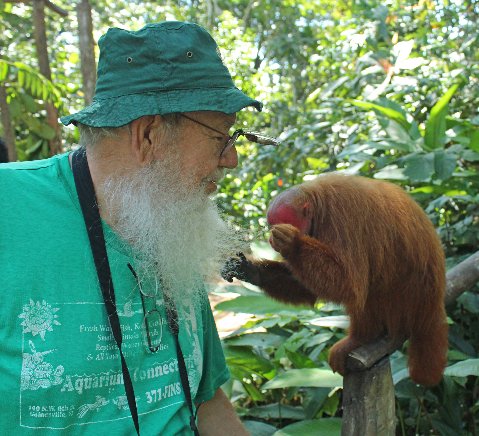Well, actually, it takes more than a bit of rain to get the gopher frogs,
Rana capito, up and moving. Truth be told, a bit of rain may get them near the mouths of the burrows in which they are usually secluded, but it takes a whole durn-lot of rain to get them out of and beyond their entryways.

The gopher frog may be the most seldom seen of the “common” southeastern frogs. A species of sandhill ponds, it spends a goodly percentage of the daylight hours an arm’s length or further back in the burrow of the gopher tortoise. When in the ponds the snoring calls of the gopher frog are unmistakable.
Like most frogs, the gopher frog is capable of considerable color change. Often having a ground color of light tan to light brown with irregular dark spots and bars when warm, they darken considerably when cold. When cold they may be nearly black. Then the darker markings are all but indiscernable.

This intriguing, rather stumpy and non-streamlined appearing, frog is adult at about 3-½ inches SVL (snout-vent length). Those found in the populations on the south Florida sand ridges are often an inch smaller when adult.

If inclined to meet this seldom seen ranid, check out sandy bottomed and rimmed ephemeral ponds. These are best if near gopher tortoise populations. And remember, torrential pours can bring loud snores!
 Author, photographer, and columnist Richard Bartlett is one of the most prolific writers on herpetological subjects in the 20th century. With hundreds of books and articles to their credit, Richard and his wife Pat have spent over four decades documenting reptiles both in the field and in captivity. For a list of their current titles, please visit their page in our bookstore. Author, photographer, and columnist Richard Bartlett is one of the most prolific writers on herpetological subjects in the 20th century. With hundreds of books and articles to their credit, Richard and his wife Pat have spent over four decades documenting reptiles both in the field and in captivity. For a list of their current titles, please visit their page in our bookstore. |




To prevent automated Bots from commentspamming, please enter the string you see in the image below in the appropriate input box. Your comment will only be submitted if the strings match. Please ensure that your browser supports and accepts cookies, or your comment cannot be verified correctly.